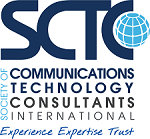As our industry gears up for the 2024 conference season it is always interesting to see what is on the list of the upcoming “hot” topics. As Eric Krapf gets the ball rolling with Enterprise Connect 2024,) our interest is piqued by an impressive list of topics that may offer clues as to where our industry is heading – the changes in the contact center, customer experience (CX), cloud migration, video and meeting rooms and of course, the big one on everyone’s radar: artificial intelligence (AI).
As a consultant, I am often struck by the gap between what is top of mind within our industry and what is top of mind – or consuming the energies of - most of the clients we work with. Many clients are supporting large, complex enterprises with just enough IT resources to keep everything running. Although everyone wants to get their hands on the new, sexy technologies coming down the road the reality is that many organizations are still wrestling with what we might term basic “blocking and tackling.”
With that in mind, let’s discuss two fundamental areas that will help organizations to see the “big picture” to be more successful as they manage their IT/communications. This article will discuss the importance of documenting inventory information (in this case, carrier services) as well as understanding the role of defining current and future communication environments before beginning major procurement projects.
Managing Current Services
A well-known quote by the management consultant Peter Drucker states “If you can’t measure it, you can’t manage it.” In our work with clients, a lack of critical – and accurate – documentation is a very common shortcoming. As an example, enterprises should have an accurate and comprehensive inventory of their carrier services to include all lines and circuits and their essential components. For small to medium size enterprises, creating and maintaining this inventory may be a reasonably doable endeavor, however, larger more complicated enterprises may find this to be a daunting and complicated task. We are often brought in on projects to build the client’s carrier network inventory followed by the work to remove unneeded services followed by the work to optimize the services that are needed. Building and maintaining this inventory is an important source of information needed to manage on-going costs as well as stay ahead of contract renewals. Having this information is also important from a support standpoint because when IT staff need to address problems, they need to know the specific carriers and circuits in play rather than trying to figure these details out in the heat of the battle. Oftentimes, this type of information is assembled into a spreadsheet. As an organization’s environment becomes large and complex, a telecom expense management (TEM) solution may be better positioned to retain this data. Regardless of the tool used, knowing this information is critical for IT managers to effectively manage the notoriously costly and difficult to understand telecom carrier billing.
Another well-known phrase is “A picture is worth a thousand words” and so it goes with a well depicted network diagram. A single network diagram can oftentimes be used to show a small to mid-sized organization’s entire carrier network which allows IT to easily reference it for planning and support purposes. This “cheat sheet” can be much more friendly to use than a spreadsheet or TEM report.
With larger organizations, diagrams may need to be crafted to provide a specific view of the network. Examples include a high level network overview diagram – or - detail diagrams of specific portions of the network such as the data centers, corporate locations, connectivity with third party organizations, etc. By assembling network diagrams of key areas of the enterprise it is oftentimes easier to assess the overall connectivity to see how bandwidth, circuit types, cost, and carrier diversity all work together to form the current network. This can allow for easier identification of weak points or areas that need to be addressed.
The combined use of spreadsheets/database tools and network diagrams can be very helpful in the overall management, support, and planning/procurement activities associated with carrier services. Next, let’s look at the role of defining current and future environments as part of the planning process when preparing to get quotes before making significant changes.
Preparing for Major Changes
When organizations begin the process of making a significant change to their IT environment that will require getting quotes, a formal RFP/RFQ process may not be part of the procurement process (this is especially true in the private sector). We sometimes see clients skip right to the step of meeting with vendors to collect and evaluate information on the new solution under consideration as they work to reach a decision on which solution/vendor to be selected and implemented.
Our recommendation is to take a step back and first clearly identify their current environment. If we use the example of replacing a premise communications system (IP PBX) with a hosted (UCaaS) solution, we would advise that before meeting with any vendors, the current environment should be written up to include commentary on things such as what system is currently in use, its size and relevant quantities, trunking, station count and make up, applications used, a description of the environment (single location, campus, branch sites, etc.).
Additionally, address what is working well and what feature sets are being used. They may also want to address what is not working well as well as what are the drivers for this initiative. The above is not meant to necessarily be a comprehensive list of what to address but a reasonable level of detail sets the stage such that any vendor quoting will understand what they will encounter if they are selected.
Next, we recommend writing up a section on what they expect to see in their future environment as it relates to this solution. Any significant changes in quantities to be served, applications to be used, feature sets to be available, implementation and training support required, should be communicated in this section. If nothing else, this document can serve as a framework for discussions with the vendors to make sure a common message is communicated so that quotes coming back are not all over the map.
In Conclusion: Master the Details That Make Up the Big Picture
With all the attention on cutting edge technologies coming to market, most organizations are still very focused on effectively supporting the business at hand. Internal resources are limited in many of the IT shops we work with, and this sometimes leads to challenges balancing where to spend time and energy -will it be on tactical or strategic activities? Having the information to see the “big picture” is an important step that will pay dividends for internal IT as well as the vendors called on to support them.
Ted is writing on behalf of the SCTC, a premier professional organization for independent consultants. Our consultant members are leaders in the industry, able to provide best of breed professional services in a wide array of technologies. Every consultant member commits annually to a strict Code of Ethics, ensuring they work for the client benefit only and do not receive financial compensation from vendors and service providers.











